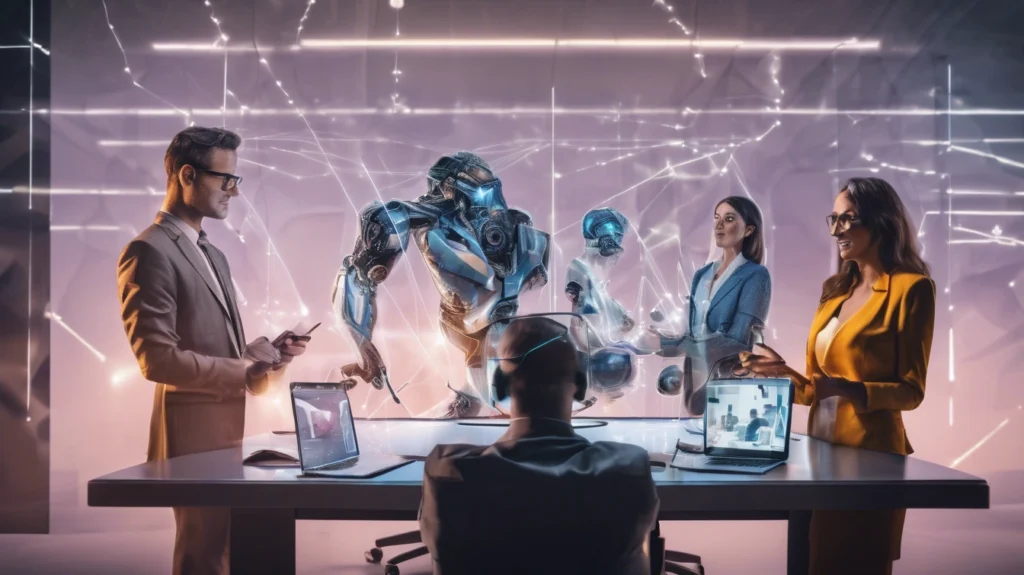

The profession we’ve built our careers on is experiencing its most significant transformation since the rise of digital marketing. While our industry has always prided itself on relationship-driven business development, the traditional approach to creative client engagement is reaching its limits. The challenge facing every professional services marketing leader today isn’t just about staying competitive—it’s about reimagining what client engagement can become in an AI-augmented world.
Professional services marketing has been operating within familiar creative boundaries for decades. We write proposals using templates refined over years. We develop case studies following established formats. We craft presentation narratives that mirror successful precedents. This approach served us well when differentiation came primarily through expertise and relationships. But today’s clients expect more.
The harsh reality confronting marketing directors across the AEC industry is that traditional creative processes are increasingly inadequate for modern client expectations. Clients now experience hyper-personalized interactions in their consumer lives—from Netflix recommendations that seem to read their minds to retail experiences that anticipate their needs. When they engage with professional services firms, they’re often met with generic proposals, one-size-fits-all presentations, and standardized follow-up communications that feel impersonal by comparison.
Consider the typical proposal development process. Your team spends weeks crafting what you believe is a compelling response, drawing from past successes and industry best practices. Yet you’re essentially creating a static document for a dynamic client need. The proposal that lands on the decision-maker’s desk may not address the concerns that emerged in conversations that happened after your intelligence-gathering phase ended. You’re solving yesterday’s problem with last week’s information.
This creative stagnation manifests in several critical ways. First, our content lacks the dynamic responsiveness that modern clients expect. Second, our ability to personalize at scale remains limited by human bandwidth. Third, our creative processes can’t adapt in real-time to changing client circumstances or emerging project complexities. Most importantly, we’re missing opportunities to demonstrate innovation in our marketing that could signal our firm’s forward-thinking approach to client service.
The competitive implications are significant. Firms that continue operating within traditional creative constraints will find themselves perceived as outdated, regardless of their technical capabilities. Meanwhile, early adopters who embrace AI-enhanced creativity are already capturing disproportionate attention from clients who value innovation.
The solution isn’t about replacing human creativity with artificial intelligence—it’s about augmenting human insight with AI capabilities that expand what’s possible. Leading professional services firms are discovering that AI tools can serve as creative multipliers, enabling personalization at scale while maintaining the authentic voice and strategic thinking that clients value.
The most effective approach involves building what I call “creative intelligence systems”—integrated workflows where AI handles routine creative tasks while humans focus on strategic direction and relationship nuance. This doesn’t mean automating everything; it means intelligent automation that amplifies human creativity rather than replacing it.
Consider proposal development reimagined through this lens. AI tools can analyze client communications, project documentation, and industry trends to identify specific language preferences, priority concerns, and decision-making patterns unique to each opportunity. Your team still develops the strategic positioning and key messages, but AI handles the personalization layers that make each proposal feel crafted explicitly for that client’s situation.
Dynamic content generation represents another breakthrough application. Instead of static case studies, forward-thinking firms are creating AI-powered content that adapts based on who’s viewing it. A case study about a healthcare project might emphasize sustainability metrics when viewed by an environmentally-conscious client, while highlighting efficiency gains when accessed by a cost-focused decision-maker. The core project information remains consistent, but the narrative emphasis shifts to match viewer priorities.
Real-time presentation adaptation is emerging as a game-changing capability. AI-powered presentation tools can monitor audience engagement during virtual meetings, adjusting content emphasis based on questions asked, topics that generate interest, and sections where attention wanes. Your presentation becomes a living document that evolves during the meeting itself.
Perhaps most importantly, AI is enabling what I call “predictive creativity”—the ability to anticipate client needs before they’re explicitly expressed. By analyzing communication patterns, project timelines, and industry trends, AI tools can suggest creative approaches that address concerns clients may not have yet articulated. This positions your firm as genuinely consultative rather than simply responsive.
The firms implementing these AI-enhanced creative approaches are seeing remarkable results that extend far beyond traditional marketing metrics. The transformation is evident in both quantitative performance improvements and qualitative client feedback, signaling a fundamental shift in how clients perceive their service experience.
Proposal win rates represent the most direct measurable impact. Firms using AI-powered personalization and dynamic content generation are reporting win rate improvements of 15-25% compared to traditional approaches. More significantly, they’re achieving these improvements while reducing proposal development time by approximately 30%. The efficiency gains allow teams to pursue more opportunities while maintaining higher quality standards.
Client engagement metrics reveal equally compelling results. AI-enhanced presentations generate 40% more questions and follow-up conversations compared to static formats. Email open rates for AI-personalized communications consistently outperform traditional approaches by 35-50%. Perhaps most telling, client feedback increasingly includes comments about feeling “understood” and “heard” in ways that weren’t common with traditional marketing approaches.
The speed of relationship development has accelerated dramatically. Clients report feeling more confident in firms that demonstrate a sophisticated understanding of their needs early in the relationship. This translates to shorter sales cycles and higher-value initial engagements. One architectural firm reported that its average time from initial contact to contract signing decreased by 45% after implementing AI-enhanced client intelligence systems.
Beyond immediate marketing results, these approaches are transforming how firms think about client service delivery. Marketing teams that embrace AI creativity often become innovation laboratories for the entire organization. The tools and techniques developed for marketing applications frequently find applications in project delivery, client communication, and business development processes.
The competitive advantage extends to talent attraction and retention. Top marketing professionals increasingly want to work for firms that embrace innovation rather than rely solely on traditional approaches. Firms known for AI-enhanced creativity are attracting better talent while retaining team members who might otherwise seek more progressive environments.
The creative transformation enabled by AI isn’t a future possibility—it’s happening now among the firms that will define the next decade of professional services marketing. The question facing every marketing leader is whether to lead this transformation or follow it.
The most successful implementations start with small experiments that demonstrate value quickly. Choose one creative process—perhaps proposal personalization or client communication—and implement AI enhancement tools that can show measurable improvement within 60 days. Use these early wins to build organizational confidence and budget support for broader transformation.
Remember that this evolution amplifies human creativity rather than replacing it. The firms winning with AI creativity are those that maintain their strategic thinking and relationship focus while leveraging technology to execute at levels that weren’t previously possible.
The creative boundaries that have defined our industry for decades are dissolving. The marketing leaders who recognize this shift and act decisively will build competitive advantages that compound over time. Those who wait will find themselves responding to standards set by more innovative competitors.
The prompt-driven future of professional services marketing has already begun. The question is whether you’ll help write it or read about it.
Share this post: